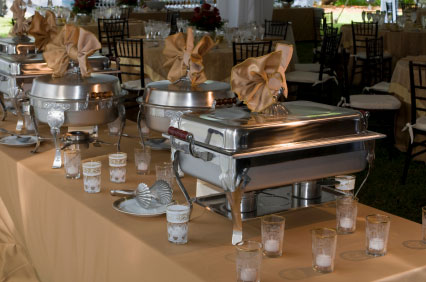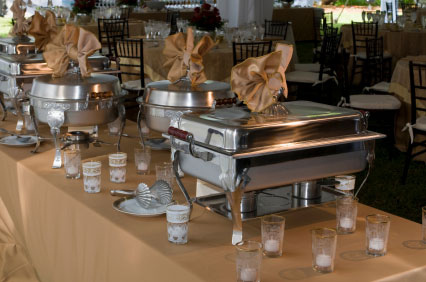What Can High Quality Chafers And Chafing Dishes Do For Your Business?

A professional chef knows the importance of serving food at the correct temperature. Serving food at the wrong temperature is something that separates amateur chefs from the professionals. There is a trade secret used by many professionals that enables them to prepare food in advance and still keep it at the right temperature before it is served. Chafers, also known as chafing dishes, are special ceramic or metal trays that hold food. Below the chafing dish, a flame or heat source provides constant warmth to the food to keep it at the correct temperature. The name of this special dish derives from the French word “chauffer,” which means “to keep warm.

Water Jackets
Some chafing dishes are equipped with a secondary tray known as a water jacket. The food pan that contains food is placed into the water jacket tray. A layer of hot water surrounds the food tray and keeps it warm without scorching the food. The principle behind a water jacket is quite similar to the cooking principle behind a double boiler. Delicate foods, such as fish, are often kept warm in chafing dishes that use a water jacket.
Types of Chafing Fuel
When the chafing dish was first developed, the fuel used to keep dishes warm was most often charcoal or embers from a fire. This was the only fuel accessible; however, charcoal and fire embers are very flammable and quite dangerous. To receive the same benefits from a chafing dish without the risk of fire, most professional chefs and caterers use a chafing fuel blend. Canisters of chafing fuel are filled with a combustible or noncombustible gel. Most chafing fuel canisters feature methanol or ethanol because they can be safely burned indoors. These gels do not emit fumes, smoke, or dangerous gasses, so they are preferable for keeping food warm.
Chafing Dish Safety
When using a chafing dish, it is very important to practice a few safety standards in order to prevent fire hazards. Caterers and professional chefs need to be careful when using certain types of chafing fuel, as the fuel inside the canister may be flammable. If it were to spill, tablecloths, tables, napkins, and many other items could easily catch fire. When using a chafing dish, be sure to use the appropriate or suggested type of chafing fuel. Many chafing dishes have small compartments below the tripod that house the canister of chafing fuel and prevent spilling.
If your chafing dish is not equipped with this compartment, consider elevating the chafing fuel with an overturned dish to prevent the fuel from coming in contact with the table. Using chafing fuel canisters that have a wick are another great way to prevent fire hazards. These chafing fuel canisters contain diethylene glycol gel, which is not flammable. The wick absorbs the gel and allows for combustion, but the gel will not catch fire if the canister is spilled.
For your safety, when working with any open flame, it is important to have a fire extinguisher close at hand. If a chafing fuel canister combusts or catches linens or table setting elements on fire, a fire extinguisher can smother the blaze before it becomes out of hand. Keeping the area around chafing dishes clear of obstructions or decorative elements will further reduce the chance of a fire developing. Chafing dishes are relatively safe, and they represent a great way to keep food warm during a catered event, buffet, or other commercially prepared meal. Chafing dishes are practical, but they are also elegant and professional in appearance. Adding chafing dishes to your business will help maintain a pro look.
Jeff Breeden offers the latest information and resources in commercial cooking and restaurant service at CooksDirect.com.
